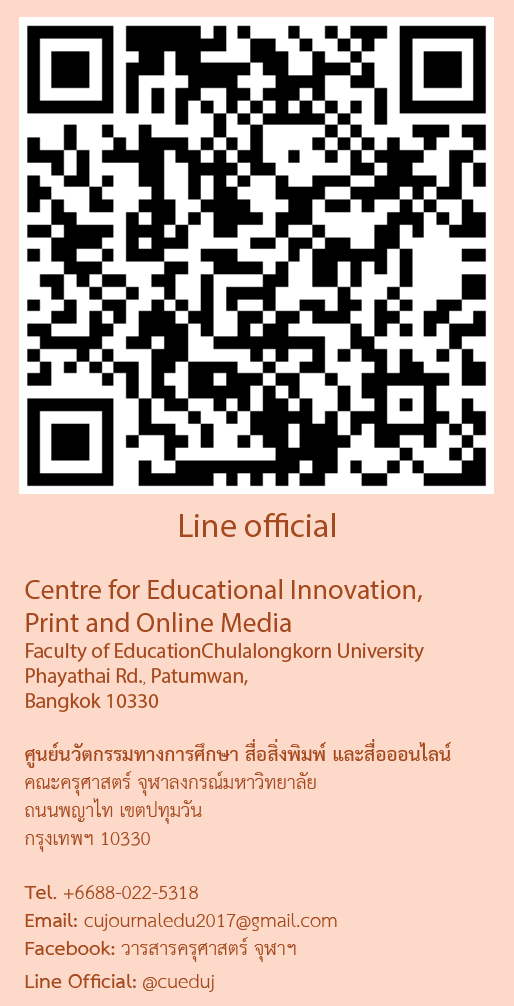Abstract
This study aimed to explore out-of-class English language listening activities and to study the process of out-of-class English language listening activities of lower secondary students. The samples of this study were 140 ninth-grade students obtained from a calculation using the formula of Raosoft (2004). Two out of five schools under the office of secondary education area 42 and were selected by convenience sampling method. The research instruments were the questionnaires and the interview. The findings revealed that three out-of-class English language listening activities, including listening to English songs, watching English movies, and watching English TV programs, were mostly used in aspects of the frequency and the duration of the use. When multiple comparisons between frequency and duration of activity use were carried out, the results showed that the use of out-of-class English language listening activities of the high proficiency group and the low proficiency group students were significantly different at the significance level .05. The findings showed that students mostly used their mobile phone devices to do the activities outside the classroom. Students of the high proficiency and low proficiency groups were different in their use of the activities as well as in the solutions to the listening problems outside the classroom.
Publisher
Faculty of Education, Chulalongkorn University
DOI
10.58837/CHULA.EDUCU.47.4.3
First Page
38
Last Page
64
Recommended Citation
Phuangsua, Kanyanee and Chusanachoti, Ruedeerath
(2019)
"A Study of Out-of-Class English Language Listening Activities of Lower Secondary School Students,"
Journal of Education Studies: Vol. 47:
Iss.
4, Article 3.
DOI: 10.58837/CHULA.EDUCU.47.4.3
Available at:
https://digital.car.chula.ac.th/educujournal/vol47/iss4/3


